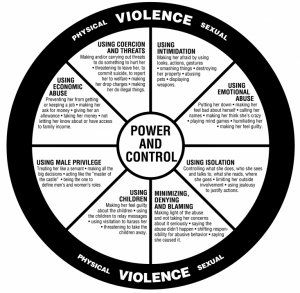Learn the Signs
What is Domestic Violence?

202 East Superior Street, Duluth, MN, 55802
218-722-2781
(Excerpt from The National Domestic Violence Hotline.)
Domestic violence (also called intimate partner violence (IPV), domestic abuse or relationship abuse) is a pattern of behaviors used by one partner to maintain power and control over another partner in an intimate relationship.
Domestic violence does not discriminate. Anyone of any race, age, sexual orientation, religion or gender can be a victim – or perpetrator – of domestic violence. It can happen to people who are married, living together or who are dating. It affects people of all socioeconomic backgrounds and education levels.
Domestic violence includes behaviors that physically harm, arouse fear, prevent a partner from doing what they wish or force them to behave in ways they do not want. It includes the use of physical and sexual violence, threats and intimidation, emotional abuse and economic deprivation. Many of these different forms of domestic violence/abuse can be occurring at any one time within the same intimate relationship.
Here at The Hotline, we use the Power & Control Wheel* to describe most accurately what occurs in an abusive relationship.
Think of the wheel as a diagram of the tactics an abusive partner uses to keep their victim in the relationship. While the inside of the wheel is comprised of subtle, continual behaviors, the outer ring represents physical, visible violence. These are the abusive acts that are more overt and forceful, and often the intense acts that reinforce the regular use of other more subtle methods of abuse.
*Although this Power & Control Wheel uses she/her pronouns for the victim and assumes a male perpetrator, abuse can happen to people of any gender in any type of relationship.
Warning Signs of Domestic Violence
It’s not always easy to tell at the beginning of a relationship if it will become abusive.
In fact, many abusive partners may seem absolutely perfect in the early stages of a relationship. Possessive and controlling behaviors don’t always appear overnight, but rather emerge and intensify as the relationship grows.
Domestic violence doesn’t look the same in every relationship because every relationship is different. But one thing most abusive relationships have in common is that the abusive partner does many different kinds of things to have more power and control over their partner.
Some of the signs of an abusive relationship include a partner who:
- Tells you that you can never do anything right
- Shows extreme jealousy of your friends and time spent away
- Keeps you or discourages you from seeing friends or family members
- Insults, demeans or shames you with put-downs
- Controls every penny spent in the household
- Takes your money or refuses to give you money for necessary expenses
- Looks at you or acts in ways that scare you
- Controls who you see, where you go, or what you do
- Prevents you from making your own decisions
- Tells you that you are a bad parent or threatens to harm or take away your children
- Prevents you from working or attending school
- Destroys your property or threatens to hurt or kill your pets
- Intimidates you with guns, knives or other weapons
- Pressures you to have sex when you don’t want to or do things sexually you’re not comfortable with
- Pressures you to use drugs or alcohol
Explore the tabs below to learn some of the common warning signs of each type of abuse. Experiencing even one or two of these behaviors in a relationship is a red flag that abuse may be present. Remember, each type of abuse is serious, and no one deserves to experience abuse of any kind, for any reason. If you have concerns about what’s happening in your relationship, contact us. We’re here to listen and support you!